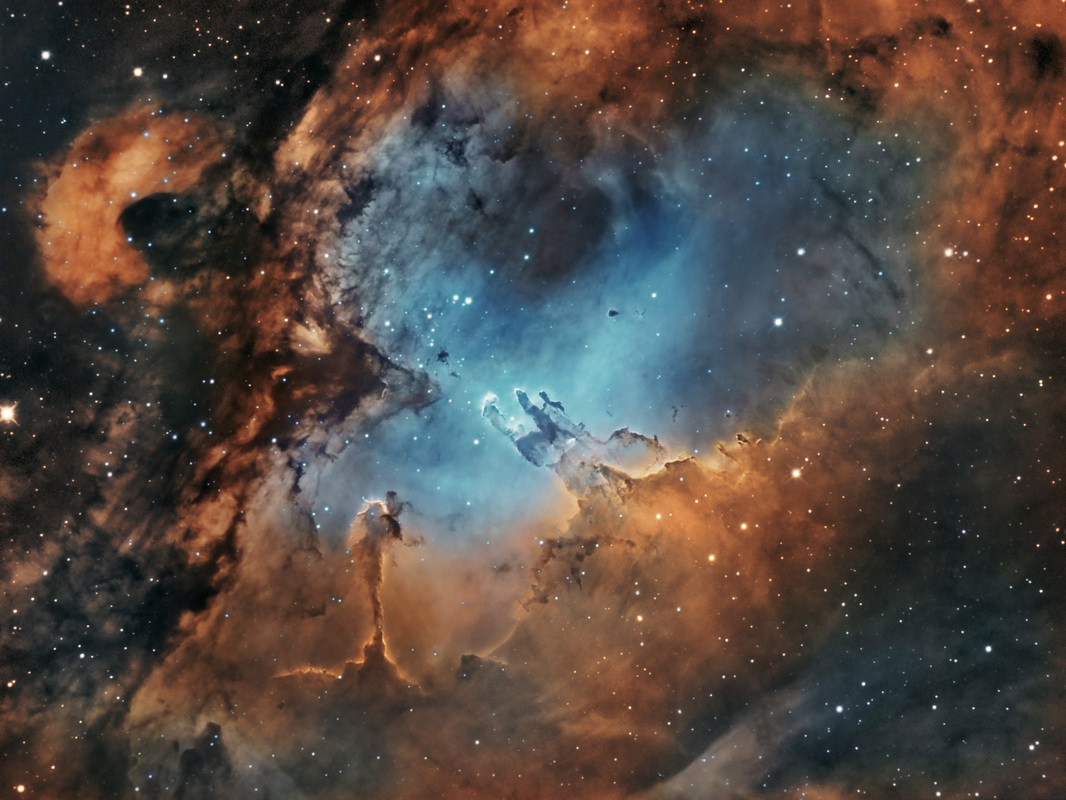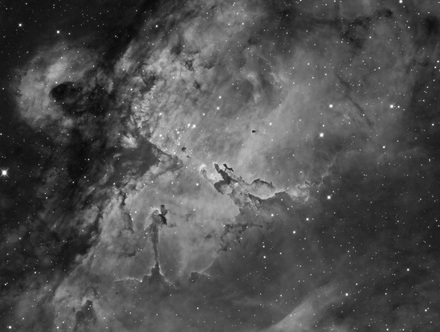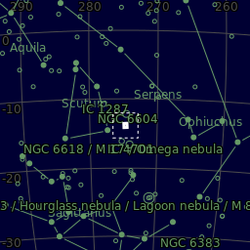M16 The Pillars of Creation / The Eagle nebula
|
Details
M: Mesu 200 T: ODK10 C: QSI683 with 3nm Astrodon Ha filter 28x1800s in Ha and 16x1800s in OIII Total exposure 22 hours Details
M: Mesu 200 T: ODK10 C: QSI683 with 3nm Astrodon Ha filter 28x1800s Total exposure 14 hours |
The Eagle Nebula (catalogued as Messier 16 or M16, and as NGC 6611, and also known as the Star Queen Nebula and The Spire) is a young open cluster of stars in the constellation Serpens, discovered by Jean-Philippe de Chéseaux in 1745-46. Both the "Eagle" and the "Star Queen" refer to visual impressions of the dark silhouette near the centre of the nebula, an area made famous as the "Pillars of Creation" photographed by the Hubble Space Telescope. The nebula contains several active star-forming gas and dust regions, including the Pillars of Creation.
This region of active current star formation is about 7000 light-years distant. A spire of gas that can be seen coming off the nebula is approximately 9.5 light-years or about 90 trillion kilometres long |




